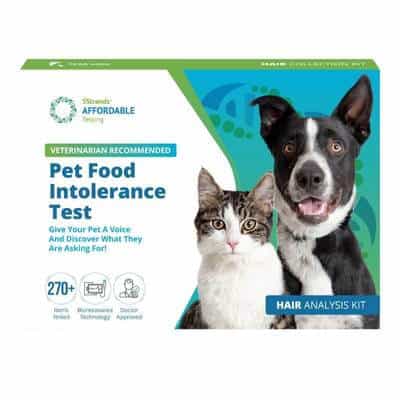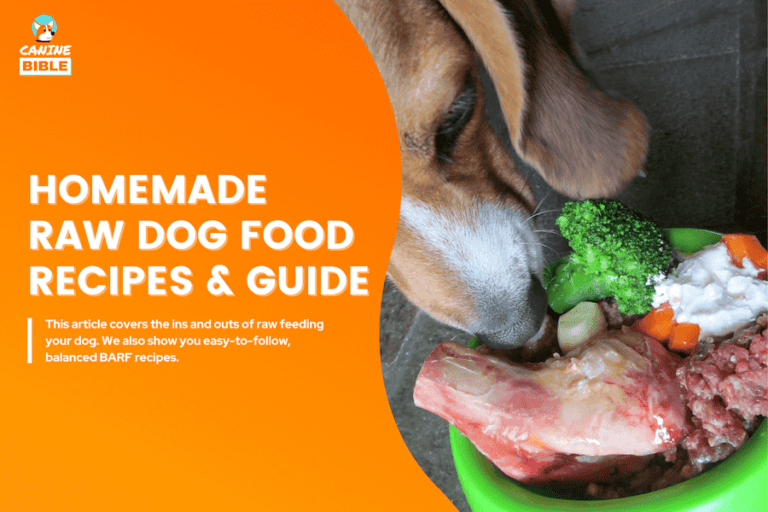The Complete Guide to Dogs Eating Spinach: Toxic or Healthy?

Canine Bible is reader-supported. We receive affiliate commissions via some of our links. Learn more.
Yes, dogs can eat spinach in moderation, and this leafy green can provide some nutritional benefits. However, before adding spinach to your dog’s diet, there are a few important considerations. While small amounts of fresh, cooked spinach are generally safe, large quantities may lead to issues due to its oxalate content, which can interfere with calcium absorption and potentially harm kidney health. What about raw spinach versus cooked? Are certain preparation methods safer? Can too much spinach cause digestive problems or other health risks? This guide will break down the benefits, risks, and the safest way to feed spinach to your dog.
Is Spinach Good For Dogs?
Spinach can be a healthy and nutrient-rich dog treat when served in moderation.
Always ensure you feed plain, cooked spinach in small amounts. Avoid adding salt, garlic, onions, butter, or seasonings, as these can be harmful to dogs. Also, steer clear of feeding large quantities or raw spinach regularly, as it contains oxalates that may interfere with calcium absorption and impact kidney health.
Benefits
100 grams (3.5-ounce oz) of spinach contains the following nutrients:
Spinach Nutrition Chart (100g)
Nutrient Analysis
| Component | Description | Nutritional Value (per 100g of Raw Spinach) | Safe for Dogs? |
|---|---|---|---|
| Water | Keeps dogs hydrated and aids digestion | 91g | ✅ Safe |
| Calories | Low energy food; great for weight control | 23 kcal | ✅ Safe |
| Carbohydrates | Provides some energy | 3.6g | ✅ Safe (in moderation) |
| Fiber | Supports healthy digestion and bowel movements | 2.2g | ✅ Safe |
| Protein | Higher than most leafy greens | 2.9g | ✅ Safe |
| Fat | Virtually none | 0.4g | ✅ Safe |
| Vitamin A | Promotes healthy skin and vision | 469µg | ✅ Safe |
| Vitamin C | Boosts immune health | 28.1mg | ✅ Safe |
| Vitamin K | Important for blood clotting | 482.9µg | ✅ Safe |
| Folate (Vitamin B9) | Crucial for cell function and tissue growth | 194µg | ✅ Safe |
| Calcium | Essential for bones and teeth | 99mg | ✅ Safe |
| Iron | Supports red blood cell production | 2.7mg | ✅ Safe (in moderation) |
| Magnesium | Supports muscle and nerve function | 79mg | ✅ Safe |
| Potassium | Helps maintain healthy blood pressure | 558mg | ✅ Safe |
| Oxalates | Can interfere with calcium absorption | Moderate to high | ⚠️ Limit if dog has kidney issues |
| Nitrates | Present naturally in spinach; harmless in small amounts | Varies | ✅ Safe (in small portions) |
| Overconsumption | May lead to digestive upset or kidney stress | — | ⚠️ Limit quantity |
Risks & Considerations Before Feeding Spinach to Dogs
While spinach can be a safe and nutrient-rich treat for dogs when given in moderation, there are several risks and considerations to keep in mind before feeding it to your canine companion:
Are Dogs Allergic to Spinach?
Most dogs are not allergic to spinach, and it’s generally considered safe for canine consumption. However, some dogs may develop an allergic reaction, as with any food. Food allergies in dogs typically manifest as itchy skin, hives, infections, and anaphylaxis (a medical emergency) in severe cases. If you suspect your dog is having an allergic reaction to any food, including spinach, it is crucial to consult a veterinarian.
Additionally, conducting an at-home dog allergy test like the 5Strands can help determine if your dog is allergic or intolerant to certain foods. For a more comprehensive approach, consider an at-home dog gut health test, like the Embark Gut Health Test, which can provide deeper insights into your dog’s digestive health and immune function. These tests can identify food sensitivities, bacterial imbalances, and other underlying issues contributing to allergies, helping you take proactive steps to prevent discomfort and support your dog’s overall well-being.
Risks
The following symptoms may indicate a bad reaction to spinach.
What to Do If A Dog Reacts Badly to Spinach
Dogs showing worsening symptoms, such as blood in their vomit or stool, difficulty breathing, weakness, or collapse, should be taken to the veterinarian immediately.
1. Contact a veterinarian immediately: Even if your dog seems fine, contact your veterinarian or an emergency pet poison hotline right away. This includes services such as the ASPCA Animal Poison Control Center at 1-888-426-4435 or the Pet Poison Helpline at 1-855-764-7661. If you can’t reach your vet, you can chat live with a registered online veterinary professional via our online vet chat or video chat support (24 hours a day, 7 days a week). You can also schedule an at-home veterinary appointment with The Vets, a mobile veterinary service that provides at-home vet care nationwide for just about everything.
2. Gather important information: When speaking to a vet, provide: Quantity consumed (estimate if unsure), time of ingestion, and dog’s weight and breed (to assess potential risk).
3. Follow veterinary instructions: The vet may suggest monitoring at home or emergency treatment at the clinic.
- Keep your dog calm and prevent them from eating anything else.
- Be prepared to transport your dog to the vet quickly if advised.
- Bring any remaining spinach or packaging to help the vet assess the situation.
How to Safely Feed Spinach to Dogs
When feeding spinach to your dog, it’s important to follow a few simple guidelines to keep them safe:
Ways to Feed Spinach to Dogs
As with any new food, starting slowly and feeding gradually is recommended to give the digestive system time to adjust.
Best Spinach Dog Food
If you’re looking to incorporate spinach into your dog’s diet and take advantage of its antioxidant-rich, vitamin-packed benefits, consider FreshPet Grain-Free Turkey Recipe with Spinach, Cranberries & Blueberries. This gently cooked recipe features farm-raised turkey as the first ingredient, paired with leafy spinach for vitamins A, C, and K, plus cranberries and blueberries for a natural boost of antioxidants. FreshPet’s grain-free formula supports healthy digestion, immune function, and overall vitality—perfect for pet parents who prefer minimally processed, wholesome ingredients.
Best Spinach Dog Treat
For those who want to provide the benefits of spinach in a delicious, wholesome way, Icelandic+ Combo Sticks: Cod & Spinach offer a naturally nutritious and flavorful snack. Crafted with wild-caught cod and vitamin-rich spinach, these chewy sticks deliver a powerful blend of lean protein and antioxidant-packed greens—supporting healthy muscles, digestion, and immune health in every bite.
How Much Spinach Can Dogs Eat?
Treats should only constitute 10% of your dog’s diet, with the remaining 90% coming from well-balanced dog food. This guideline also applies to healthy treats like spinach. Below, you’ll find general guidelines for safely portioning spinach based on your dog’s weight.
| Dog Size | Serving Size | Breed Examples |
|---|---|---|
| Extra-small (2-15 lbs.) | 1–2 teaspoons cooked spinach | Shih Tzu, Yorkies, Chihuahuas, Maltese |
| Small (16-25 lbs.) | 2–3 teaspoons cooked spinach | Boston Terriers, Beagles, Dachshunds |
| Medium (26-60 lbs.) | 1–2 tablespoons cooked spinach | Bulldogs, Basset Hounds, Border Collies |
| Large (61-90 lbs.) | 2–3 tablespoons cooked spinach | Golden Retrievers, Pit Bulls, Boxers, Labrador Retrievers |
| Extra-large (91+ lbs.) | ¼ cup cooked spinach (chopped) | Bullmastiffs, Great Danes, Saint Bernards, Great Pyrenees |
Can Puppies Eat Spinach?
Yes, puppies can eat spinach, but only in moderation and in very small amounts. Since puppies have more sensitive digestive systems, it’s best to start with just a tiny portion—such as a teaspoon of plain, cooked spinach—to see how they react. Feeding too much spinach can lead to digestive upset, and because spinach contains oxalates, excessive amounts may interfere with calcium absorption and affect kidney health over time. The best way to serve spinach is lightly steamed or sautéed without any oils, butter, salt, or seasonings. Avoid raw spinach, canned spinach, or spinach mixed with dairy or spices, as these can be harder to digest or harmful to your puppy.
When introducing spinach—or any new food—avoid giving multiple new foods on the same day. This allows you to monitor for any sensitivities or allergies. If your puppy experiences digestive issues, introducing just one new ingredient at a time helps you pinpoint the cause. Try offering a teaspoon of plain, cooked, finely chopped spinach, then wait a few days to observe how your puppy responds before offering more. Always introduce new foods gradually and consult your vet if you have concerns about your puppy’s diet.
Alternatives
Here’s a list of alternatives to spinach that are just as safe and nutritious.
Frequently Asked Questions
The Bottom Line
Yes, dogs can eat spinach—as long as it’s served in moderation and prepared properly. This leafy green is packed with vitamins, minerals, and antioxidants that can support your dog’s immune system, digestion, and overall health. However, due to its oxalate content and potential to cause stomach upset if overfed, it’s important to cook spinach plainly, serve small portions, and introduce it gradually into your dog’s diet. Whether you’re mixing a bit into their regular meals or offering it as an occasional treat, spinach can be a safe and healthy addition to your dog’s menu. As always, consult your veterinarian before making any significant changes to your dog’s diet—especially if your pup has underlying health conditions.
Whether you’re introducing spinach or any new treat, unexpected reactions can happen. Having the right pet insurance ensures you can handle any vet visits with peace of mind. Check out our guide to the best pet insurance plans to keep your furry friend covered in every situation. If you’re looking for other healthy snack options, check out the best dog treats to find safe and nutritious alternatives. And if you’re seeking something more therapeutic to support anxiety, pain, inflammation, or other health concerns, explore the benefits of CBD oil for dogs and CBD dog treats for a natural way to help your pup feel their best.
Sources
Canine Bible authorship represents the unified voice of our entire editorial team and our in-house veterinarians rather than a single author. Each article, blog post, and review published under the Canine Bible name undergoes a rigorous review process, involving all team members to guarantee accuracy and up-to-date in accordance with the latest veterinarian research. This collaborative effort is an integral part of our editorial process and aligns with our four pillars of content creation. This approach ensures our content is backed by expert knowledge and factual information, offering our readers reliable, actionable, and trustworthy content.










